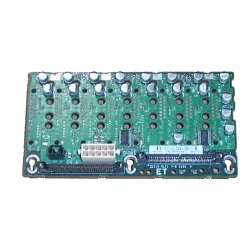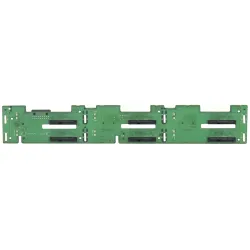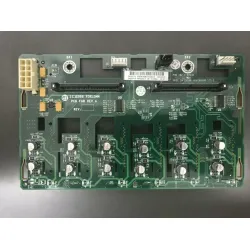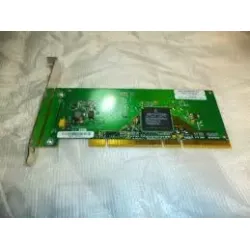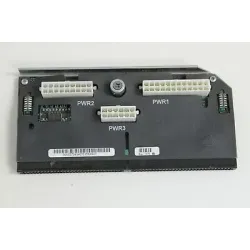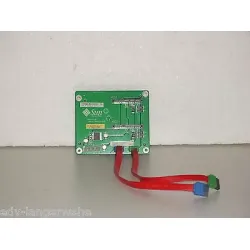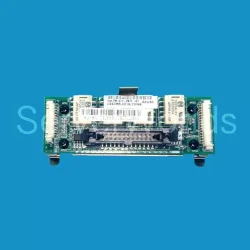The Types, Benefits, and Differences of Backplane & Midplane
Introduction server Backplane & Midplane
A server backplane is a circuit board that connects the various components of a computer system, including the processors, memory, and storage devices. It provides a physical platform for communication between these components and enables the exchange of data between them.
A midplane, on the other hand, is a type of backplane that is located in the middle of a computer system chassis. It is used to connect multiple backplanes and is designed to handle high-speed communication between different subsystems of a computer system.
Both backplanes and midplanes are critical components in computer systems as they enable the efficient transfer of data between various components. They also help to reduce the amount of cabling required in a system, which can improve the system's reliability and maintainability.
Types of Backplanes and Midplanes
Backplanes
Here are some common types of backplanes:
Industry Standard Architecture (ISA) Backplane:
The thin older type of backplane was commonly used in early PCs. It uses a 16-bit bus and supports data transfer rates of up to 8.33 MB/s.
Peripheral Component Interconnect (PCI) Backplane:
This backplane type is widely used in modern computers and supports high-speed data transfer rates. It uses a 32-bit or 64-bit bus and supports data transfer rates of up to 528 MB/s.
CompactPCI (cPCI) Backplane:
This type of backplane is commonly used in telecommunications and industrial applications. It supports high-speed data transfer rates and offers a rugged design that can withstand harsh operating environments.
AdvancedTCA (ATCA) Backplane:
This type of backplane is used in high-performance computing applications, such as data centers and telecommunications networks. It offers high-speed data transfer rates and supports advanced features such as hot-swapping and redundancy.
PCI Express (PCIe) Backplane:
This type of backplane is used in modern computers and servers to connect high-speed expansion cards such as graphics cards, network adapters, and storage controllers. It supports data transfer rates of up to 32 GB/s per lane.
Overall, the choice of backplane depends on the specific application and the requirements for data transfer speed, reliability, and scalability. The design and layout of the backplane must be carefully considered to ensure proper cooling and signal integrity.
Midplanes
There are several types of midplanes, each with its specific characteristics and uses. Here are some of the most common types of midplanes:
AdvancedTCA (ATCA) Midplane:
This type of midplane is used in high-performance computing applications, such as data centers and telecommunications networks. It provides a high-speed interconnect between the different components of a system and supports advanced features such as hot-swapping and redundancy.
MicroTCA Midplane:
This type of midplane is designed for applications that require high-density computing, such as telecommunications and military systems. It provides a compact and rugged platform for communication between different components.
VMEbus Midplane:
This type of midplane is used in industrial and military applications. It provides a high-speed interconnect between different VMEbus cards and supports advanced features such as hot-swapping and redundancy.
VPX Midplane:
This type of midplane is designed for high-performance embedded computing applications, such as military and aerospace systems. It provides a high-speed interconnect between different VPX cards and supports advanced features such as hot-swapping and redundancy.
CompactPCI (cPCI) Midplane:
This type of midplane is commonly used in telecommunications and industrial applications. It provides a high-speed interconnect between different cPCI cards and supports advanced features such as hot-swapping and redundancy.
Overall, the choice of midplane depends on the specific application and the requirements for data transfer speed, reliability, and scalability. The design and layout of the midplane must be carefully considered to ensure proper cooling and signal integrity.
Benefits of Backplanes and Midplanes
Backplanes and midplanes provide several benefits in computer systems:
Scalability:
Backplanes and midplanes provide a modular platform for adding or removing components such as expansion cards and modules, allowing for easy system upgrades and scalability.
Reduced cabling:
By consolidating the connections between different components onto a single backplane or midplane, the need for individual cables and connectors is reduced, resulting in a cleaner and more organized system.
Increased reliability:
Backplanes and midplanes provide a centralized interconnect for the system, reducing the potential for loose or faulty connections, and increasing overall system reliability.
High-speed data transfer:
Backplanes and midplanes are designed to support high-speed data transfer between different components of a computer system, providing fast and efficient communication between subsystems.
Redundancy:
Many modern backplanes and midplanes support redundancy features such as hot-swapping and failover, allowing for increased system uptime and reduced downtime in the event of a component failure.
Overall, backplanes and midplanes provide a robust and reliable platform for building complex computer systems that require high-speed communication between different subsystems.
Differences between Server Backplane and Midplane
Server backplanes and midplanes are both used in computer systems to provide a centralized interconnect for components, but they have some key differences:
Location:
Backplanes are typically located at the back of a server chassis and provide connectivity between the motherboard and the server's expansion slots, while midplanes are located in the middle of the chassis and provide connectivity between different components such as power supplies, fans, and storage devices.
Function:
Backplanes provide connectivity between the motherboard and expansion cards, such as network interface cards, storage controllers, and graphics cards, while midplanes provide connectivity between different subsystems such as power supplies, fans, and storage devices.
Complexity:
Backplanes tend to be simpler than midplanes, as they typically provide a single function of connecting expansion cards to the motherboard. Midplanes, on the other hand, can be more complex, as they must provide connectivity between multiple subsystems and support features such as hot-swapping, redundancy, and high-speed data transfer.
Compatibility:
Backplanes and midplanes are often designed for specific server chassis and are not interchangeable between different models or brands.
The choice between a backplane and a midplane depends on the specific application and system requirements. A backplane is generally used for connecting expansion cards, while a midplane is used for interconnecting different subsystems in a server chassis.
Backplane and midplane are terms commonly used in electronics and computer hardware to refer to the physical structure that connects and integrates various electronic components and devices.
A backplane is a board or panel that connects various electronic components and devices, such as circuit boards, power supplies, and input/output modules, in a chassis or enclosure. It provides a high-speed communication pathway between the components and allows them to share data and resources. The backplane is typically located at the rear of the chassis or enclosure, hence the name "backplane."A midplane, on the other hand, is a type of backplane that is located in the middle of a device or system, dividing it into two separate sections. It provides a physical and electrical separation between the front-end and back-end components of the device or system, such as storage arrays, blade servers, and modular routers. This separation allows for greater flexibility in the design and configuration of a device or system and also enables easier maintenance and upgrades of individual components.
Backplanes and midplanes offer several benefits in electronic systems, making them a popular choice for connecting and integrating various electronic components and devices. One of the primary advantages is that they simplify the design process by providing a standardized way of connecting multiple electronic components and devices in a system. This can save time and cost, as it reduces the need for custom wiring and cabling.
Backplanes and midplanes work by providing a physical structure and connection points for electronic components and devices within a system. They typically consist of a flat, rigid board or panel that contains connectors or slots for plugging in other electronic components, such as printed circuit boards, power supplies, and input/output modules.



